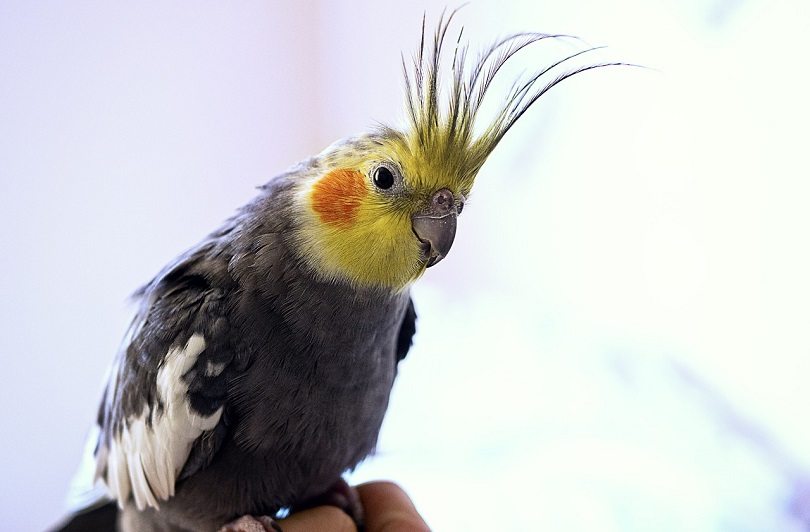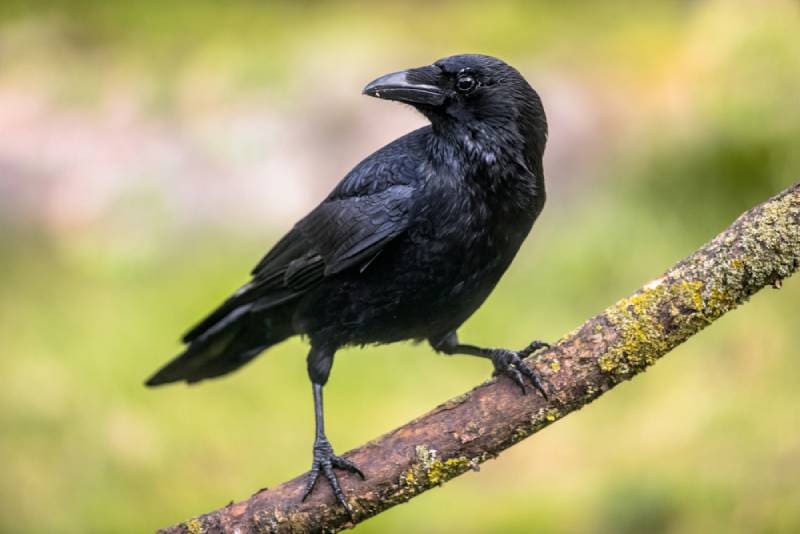How to Catch a Parakeet That Escaped: 8 Tips & FAQ

Updated on
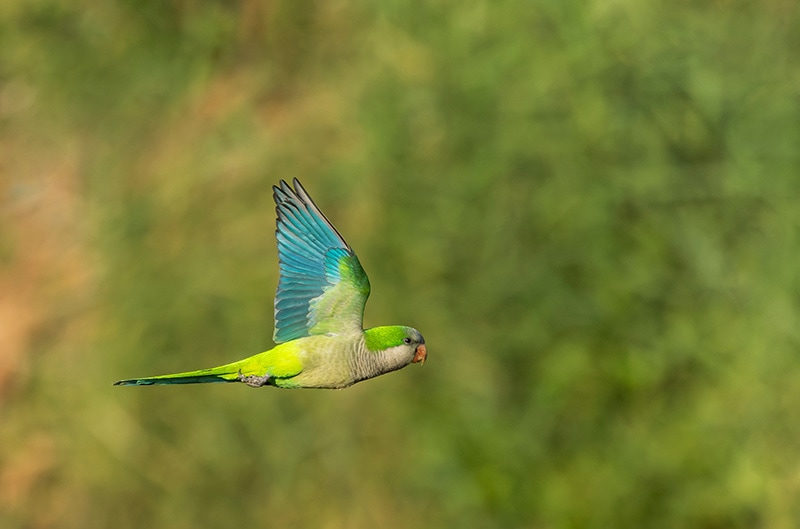
Click to Skip Ahead
Parakeets make great pets because they are friendly, fun, and can be tamed. But some parakeets, when given the slightest scent of fresh air, will make a bid for freedom and fly through open doors and windows. If your parakeet does get out, all may not be lost. Many owners successfully get their birds back. Remain calm, enlist the help of others, and act quickly. Use millet or other favorite treats, and put the bird’s cage somewhere visible to help lure them back in.
Below are 8 tips to help improve your chances of getting an escaped parakeet back home.
The 8 Tips to Catch a Parakeet That Has Escaped
1. Time Matters
You need to act quickly to help ensure the safe return of a lost parakeet. The longer the bird is out of the house, the further it could fly away, and this will make finding it more difficult. Many will not survive cold weather, although there are instances of birds returning home after weeks out in the cold winter.
Enlist the help of family members, friends, and neighbors who are willing to help because this will enable you to cover more ground, check more trees, and ask at more properties.
2. Ask Around

Start with your closest neighbors. Knock on their doors and ask if they have seen a parakeet in nearby trees or their gardens. Tame parakeets will not usually fly far from their house, at least at first. Even if your neighbors haven’t seen your bird yet, they can keep an eye out. In most neighborhoods, it is quite easy to spot something as colorful as a parakeet.
3. Use Millet or Favorite Treats
Parakeets usually respond well to millet, but yours may have a different favorite treat. Whatever your bird’s preferred treat is, grab some. If you spot it up in a tree or if you can get close to the bird, the treat may help coax it down. You can also place some in your bird’s cage.
Your parakeet might fly back to the house, especially when it is hungry and if it hasn’t flown far away. The allure of millet could be enough to convince them into the cage.
4. Put the Cage in a Visible Spot
If it can be moved outside, and there are no other birds in the cage, move your parakeet’s cage outside. Put it somewhere high up but where you can still reach it and put millet or other treats inside the house. Make sure the door is fully open and nothing is obstructing the bird from getting back in.
5. Use a Smaller, Separate Cage
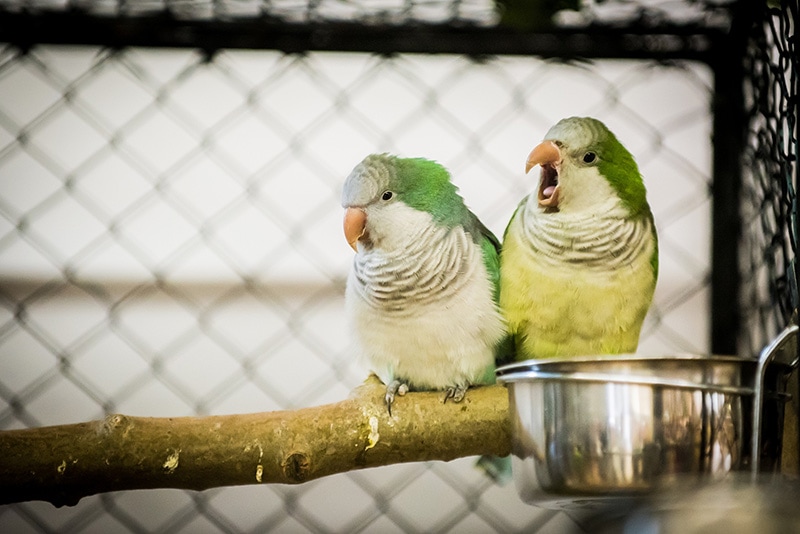
If your parakeet has escaped from an aviary or from a larger cage that typically houses two or more parakeets, use a travel cage or a smaller, spare cage you have around the house. Follow the same guidance as above, placing the cage in a prominent and easy-to-reach location and putting millet inside.
6. Call Its Name
If your bird knows its name or responds to a specific whistle, use this to try and coax it back to you. If your parakeet only responds to your calls, ask your fellow hunters just to look around and not to call out.
7. Play Budgie Recordings
Budgies are sociable birds that live in flocks in the wild. They also enjoy having fellow budgies as cage mates. Play recordings of budgies so that the escapee can hear them. If possible, put the recording in the cage and use it as a lure. You will need somebody near the cage, ready to close the door if the bird returns.
8. Don’t Spook Them
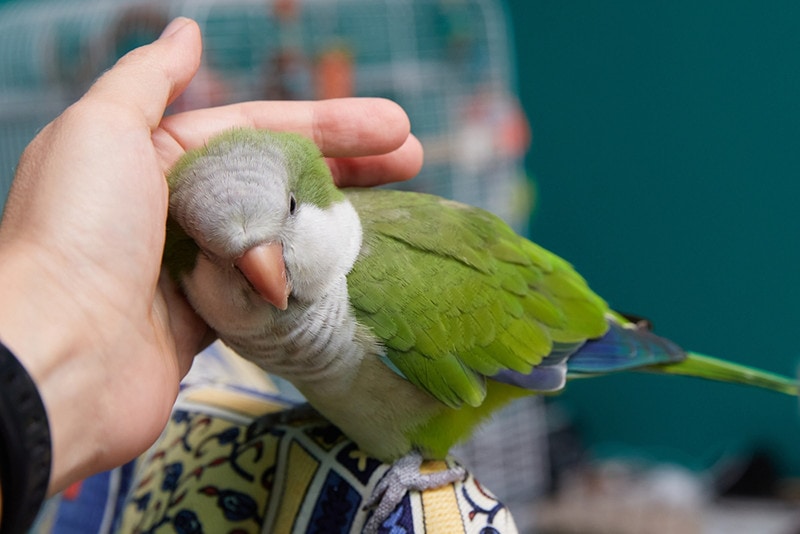
A tame parakeet will feel threatened in the wild. It can be easily spooked by cats, bigger birds, traffic, and other noises. The last thing you need to do is add to the list of noises and actions that might spook your bird. Even if it normally hops on your finger willingly, you might be better off trying to lure the bird into a cage rather than trying to grab it from your finger.
If you do try and get hold of the bird, do it gently, to minimize the risk of scaring it.
How to Prevent Parakeets Escaping
Prevention is better than cure, and while accidents and escapes can occur even to the most diligent keeper, there are some steps you should always take to help reduce the risk and prevent escape.
- Lock the Cage – Some parakeets are very good at opening closed doors, but not if you have a secure lock on the door. If you do have a lock, ensure you use it. Lock the door whenever the Parakeet is in the cage and encourage others to do the same.
- Secure Doors and Windows – If your parakeet does make it out of the cage, it is a lot easier to catch it when it is flying around indoors than when it is outdoors. Ensure doors and windows are closed when you let your bird out. And, when it is time to let your parakeet exercise, go around and check any points of exit that might be a problem, in case you or somebody else has opened them.
- Remind Everybody to Secure the House – While you can check every door and window whenever you let the bird out, you can also have others help prevent escapes. Ensure that everybody in the house closes doors and windows when they’re not in use and have them double-check before opening the cage door.
- Teach Your Bird to Respond to Whistles – Some parakeets respond to hearing their names called. Others will respond to whistles and other calls. Train your parakeet to come to you when you whistle, and it will make any future rescue attempts much easier.
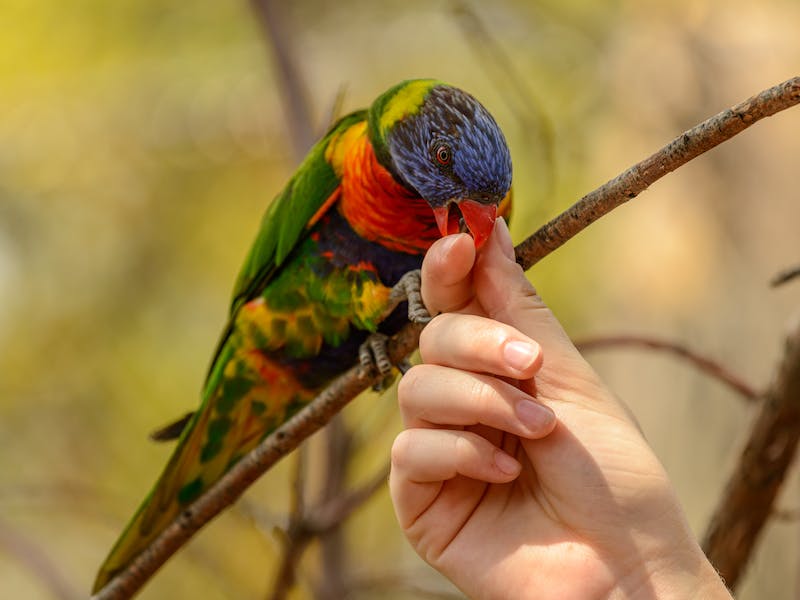
Frequently Asked Questions
Can You Microchip a Parakeet?
It is possible to microchip a parakeet. The microchip works the same way as those that are used in cats and dogs. It can be scanned if the bird is found and taken to a vet or other professional with a microchip scanner. The chip is linked to the owner and the person scanning the microchip is given the contact details of the owner.
Bird microchips go in the breast of the bird, rather than in the back of the neck, and the insertion of a microchip should only be undertaken by a professional avian vet. Alternatively, many owners band their birds. This means placing an identifying band around one of the bird’s legs, similar to a dog or cat wearing a tag with its owner’s details.
Can a Parakeet Survive Outside?
Parakeets can survive some time outside, but because they are tame, they are not used to finding their own food and they may not recognize other animals as the threats they are. They are particularly susceptible to extreme cold weather and, despite being from tropical countries, they also struggle in very hot climates. That said, if the weather is temperate and there is a supply of food, for example in garden bird feeders, a Parakeet can survive outside the house.

Can a Parakeet Find Its Way Home?
Parakeets do not have a natural sense to find their way home. If one doesn’t fly far away from its cage and recognizes a sight or sound, it may fly towards that sound. However, if it sees or hears something it deems to be a threat, it is more likely to fly further away. This is why owners need to act quickly if their parakeet does escape.
Time is of the essence and the longer it has been since losing a bird, the less likely that it will return unharmed. Finding an escaped bird means relying on your actions as well as some luck.
Conclusion
Parakeets make great pets. They are friendly, lively, fun companions. They are also brightly colored and have a pretty voice. Some of these features can help improve your odds of finding an escaped parakeet. For example, the bright color makes the bird easier to spot in trees and gardens, and the beautiful song of the parakeet can be used to try and entice a bird back to its home.
Time is the most important factor when trying to ensure the return of a lost parakeet, so enlist the help of family, friends, and neighbors, and get out looking as soon as possible.
Featured Image Credit: Traveller MG, Shutterstock



